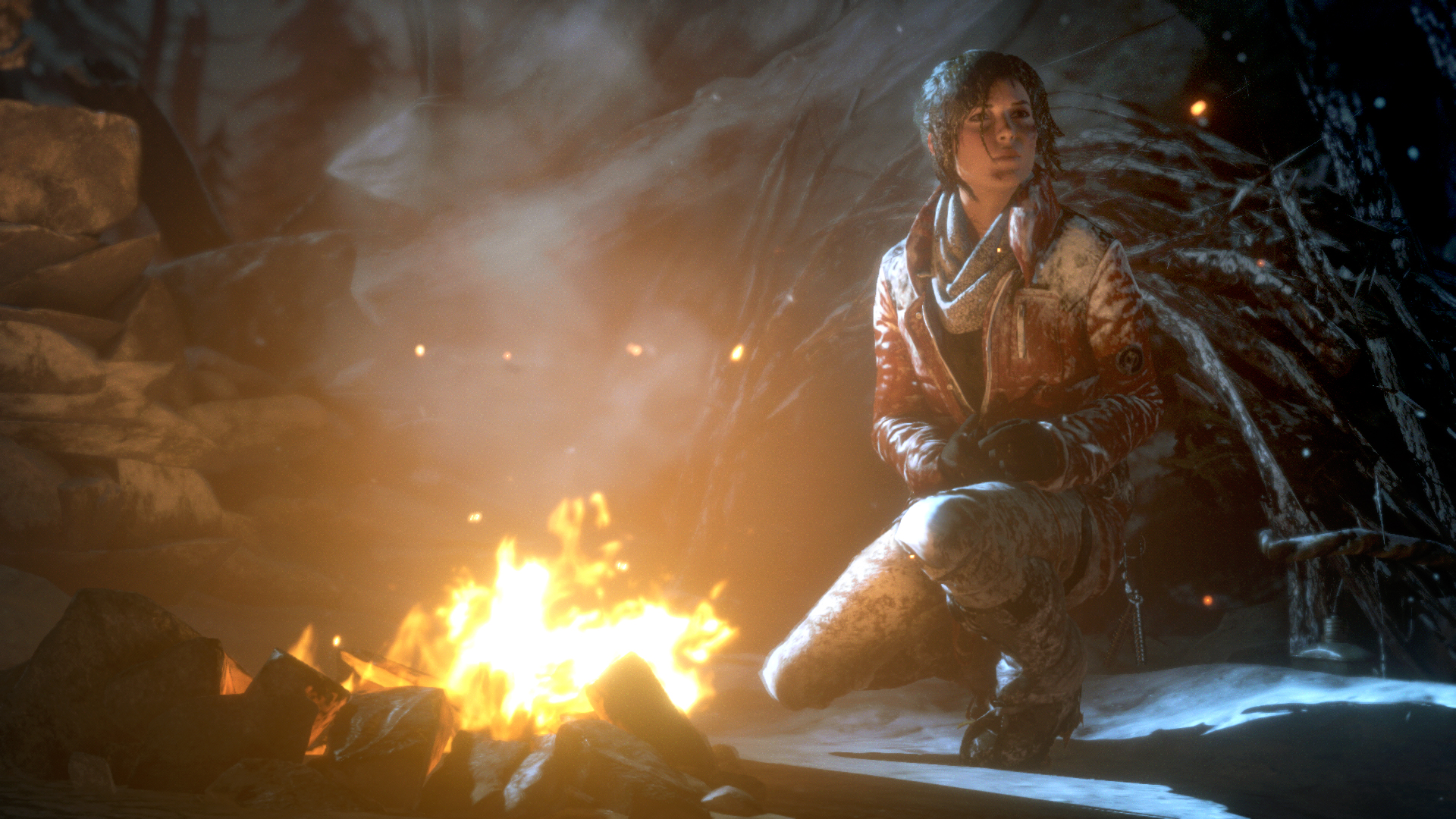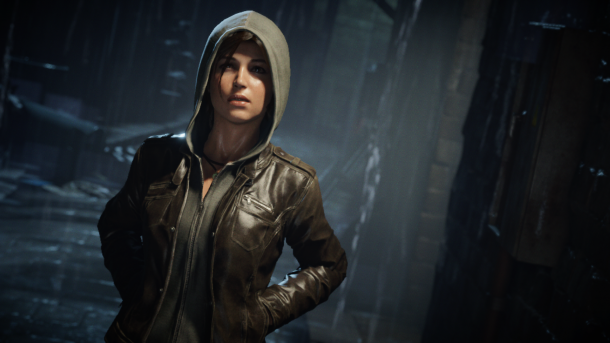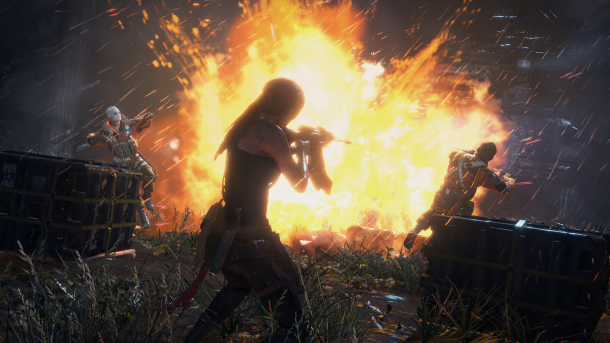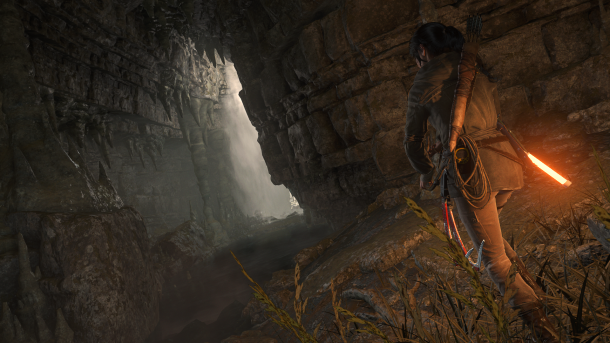The Tomb Raider series was an integral part of my pre-teen years. Not only did the old Tomb Raider teach me that games were capable of imparting both wonder and a sense of discovery, but it also granted me an influential childhood idol in the form of Lara Croft herself.
And so I found myself taking the promise in Rise of the Tomb Raider’s title rather literally: Crystal Dynamic’s latest would see Lara Croft truly embrace the titular moniker, meaning that the emphasis would shift from her survival to her thriving. Developers fueled this hope even further by noting that Rise would be putting the “tomb” back in Tomb Raider.
These hopes, as it turns out, are well placed. Rise of the Tomb Raider offers an explosive assortment of thrilling combat, stunning set-pieces, and mystifying tombs to experience. Most importantly, it cements Lara Croft’s ascension as a character, both in the context of her story arc and also as a perpetually influential videogame protagonist.
Rise of the Tomb Raider’s narrative beats will likely feel familiar to any fans of the original series. The events of the acclaimed reboot have lit a fire within Lara. After catching a glimpse at what mystical secrets are hidden within the world, she resolves to uncover the world’s supernatural mysteries and redeem both her and her father’s reputation. True to form, Lara kicks off this personal quest with a bang: her goal is to find an artifact called the Divine Source, which holds the secret to immortality. Lord Croft was on this artifact’s trail prior to his death, and so his legacy and obsession becomes Lara’s own.
Of course, Lara Croft is not the only one with her eyes on such a legendary prize. A secret society called Trinity wishes to seize the Divine Source themselves, and, as the trope goes, they’ve been working behind the scenes well before the first game’s events on Yamatai. Secret organizations and suspect corporations alike are no new territory for Tomb Raider stories, but these enemies are interesting on account of their connection with the Crofts’ history. There are a few twists, too, that I saw coming but enjoyed all the same.
I was most taken with Lara herself, as might be expected. She has shrugged off her polygonal origin, and so has become one of the most fully realized, three-dimensional characters that I have ever seen in a videogame. Lara has hopes and fears, goals and reservations. Camilla Luddington has done a fine job of making these emotions come to life, both by lending her voice to Lara and through her motion capture performances. This is a Lara for a new generation: one who is younger and more relatable, but still wholly admirable for her strength and perseverance.
Despite all of Lara’s laudatory traits, she is not without her flaws—and Rise spares no opportunity to make Lara’s questionable motives clear. She will stop at nothing to obtain the Divine Source, but at what cost will she obtain it? Are some things—like ancient artifacts or painful memories—best left buried? Rise of the Tomb Raider addresses these questions, and the answers further establish Croft as the Tomb Raider.
The gameplay never traverses into unexplored territory but, rather, refines the systems already in place. These small efforts result in gameplay that is both agile and sharp—rather like Croft’s survival skills, in fact. As before, Lara must plan her targets carefully, regardless of whether that target is an unsuspecting Trinity goon or a handhold across a perilous ravine. Going in guns blazing is never the proper approach, though Lara’s arsenal expands to a degree that, at times, it’s awfully tempting. Similarly, it’s best not to rush through the climbing or exploration portions, lest Lara take an unexpected fall into one of the game’s many booby traps. While I did fall prey to a few traps during my playthrough, I primarily struggled with how fast and loose the controls are. Lara is extremely responsive to player input, which makes it a little too easy for her to jump the wrong way off a ledge and towards an early death.
As with the original Tomb Raider, players can customize Lara to better suit their play styles by spending skill points in one of three skill trees: Brawler, Hunter, and Survivor. Each contains skills suited towards its name. The Brawler skill tree, for example, gives Lara an added edge in combat, whereas the Hunter tree helps Lara scavenge better loot.
And players will want to scavenge everything they can. The crafting system has been overhauled, making hunting and scrounging for supplies in the wilderness crucial to equipment upgrades. I admittedly ignored the hunting for the majority of the first game; in Rise, I found myself pursuing every furry, fluffy, and unassuming beast with vicious determination.
While combat is still a core component to the game, exploration is where Rise of the Tomb Raider really shines. The scenery is beautiful and presented with the sort of wonderment that actually exploring such sites would likely elicit. Lara’s journey takes players across a varied array of environments, too, ranging from glacial Siberia, scorching Syria, and a lush geothermal valley. Each central hub region hosts its own secrets, and progress is dependent on Lara’s growth. In other words, access is locked off by skills, requiring players to unlock an ability before they can go on.
While this sounds tedious and arbitrary, Rise of the Tomb Raider incorporates these region blocks in a way that feels wholly organic. I wanted to thoroughly explore each region and finish its storyline quests before moving onward, which, without fail, also enabled me to unlock the necessary skill. More to the point, I often found myself revisiting the game’s early regions to unearth additional secrets with my new skills.
Of course, each region also hosts its fair share of tombs. I often found myself just as eager as Lara herself to explore the game’s regions and unearth their secrets. I was hooked the moment I rounded a corner and saw a massive galley suspended on an icy cliff side, knowing that I was about to climb into the vessel to scrounge up hidden treasure. I will not delve into any more spoilers, but Rise offers many other unique and visually stunning tombs of that caliber.
The puzzles are simply a delight. Each revolves around manipulating pulley systems, water levels, or physics to Lara’s benefit. It would have been easy to incorporate these in a way that felt disingenuous to the environments themselves, but the puzzles are often a logical extension of the environment. Better yet, the game refuses to hold players’ hands as they navigate the tomb; while Lara’s survival sense (which highlights important things in the environment) offers useful hints, the solution to the puzzle is just challenging enough to feel satisfying without ever becoming a frustration.
The payoff in these tombs is also improved. While I was happy with the educational, historic relics from the last game, the new tombs conceal treasure that is both informative and pragmatic. Each gifts Lara with a skill that is somehow grounded in the mythos of the tomb itself. For example, upon solving the puzzles of the galley tomb, I received a skill called Ancient Ability, which taught Lara how to fire her bow like warriors of old.
While Rise of the Tomb Raider certainly focuses on Lara’s ascension as said raider, the “rise” may very well refer to the series’ return to franchise form. It stands as irrefutable proof that Crystal Dynamics is more than capable of continuing the first game’s momentum in a meaningful way, and this much is clear from the title’s thoughtful refinements and further development of Croft herself. The story may be predictable in its campiness, the journey is a wild ride rich with moments of suspense and wonderment. Rise of the Tomb Raider is a treasure itself that will delight both new audiences and long-time Croft devotees alike.
This review is based on a game code for the Xbox One provided by the developer.





No Comments